
Bringing Mother Nature indoors.
Wood, or Timber, becomes prone to fungal attack when put under specific environmental conditions, e.g., moisture contents above 20%, oxygen availability and temperatures between 15 and 45 °C.Excessive moisture ingress into any property will give nature the green light to start the decay process and break it down.
If you are not creating this type of environment in or around your property, you should be safe from wood decay and insect attack. If you are, be on the lookout for the indicators. On the left is the water loving Peziza doing what it does best in its natural habitat…feasting!
A property struggling with excessive water ingress that creates a damp environment will produce life. Mushrooms, Woodworm, and Timber Decay, in general, are caused by unknown water leaks, high humidity, and flaws in the property’s external defences.
The root source causing the decay is top priority. Stop the water, dry out and you will stop the decay process. On the right is Peziza again, but in someone’s bathroom. A red flag that caused someone to call us in and investigate. The cause, a defective shower mixer leaking.
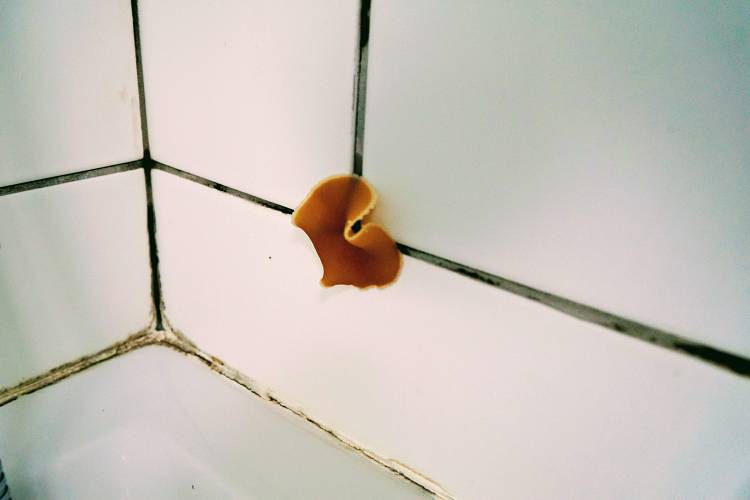
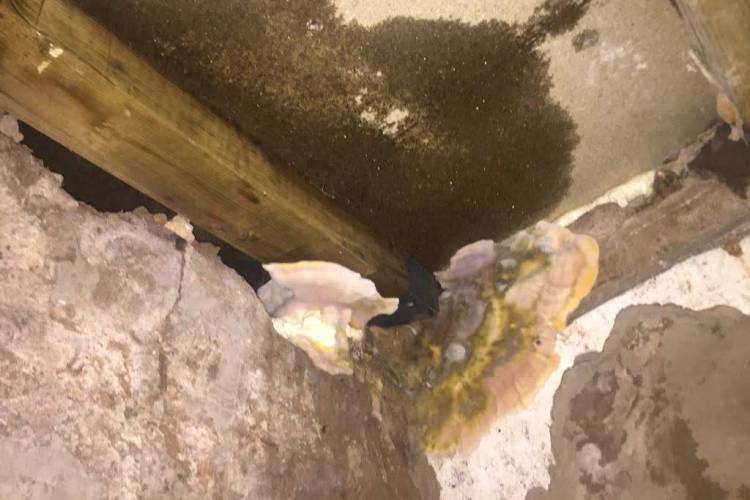
Water + Wood = Decay
I could give you the scientific rundown on all the types of wood decay and it’s special dietary requirements, but that would not be a ‘A Quick Guide to Wood-Decaying Fungus.’ Water will always be the primary cause for decay. Any genus of wood fungus cannot survive without water.
Water is the fuel for the decay process to ignite and to flourish. Remove the water, and you kill the decay. It really is that simple. Spray treatments are counterintuitive and a toxic waste of money. The dry rot outbreak on the left died once the downpipe above was fixed.
If the damp defects are left and the water allowed to continually flow into the property, any organic-based material will absorb the water and the decay process will initiate. Once the decay has taken hold, it will flourish as humidity levels will increase and the environment becomes like that of the forest floor. Damp and humid.
If you want to stop a piece of wood from decaying, you remove the source of water, initiate rapid drying of the area, and all will be dry before you know it. In other words, take it off the forest floor! Dry rot on the right being caused by poor sealant around the shower tray.
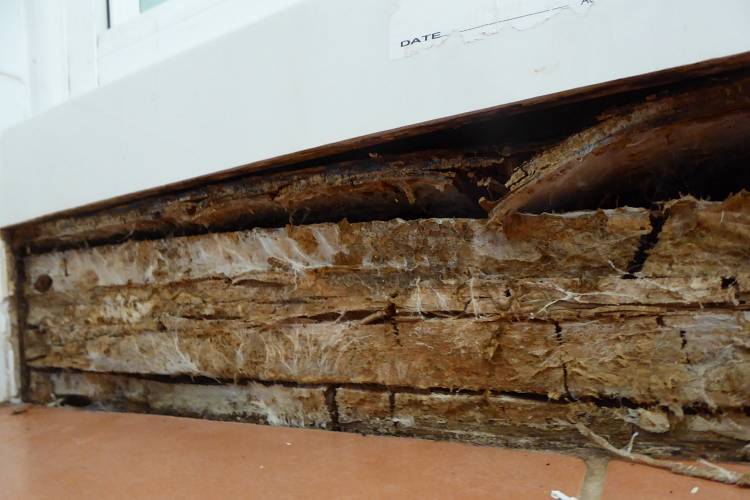
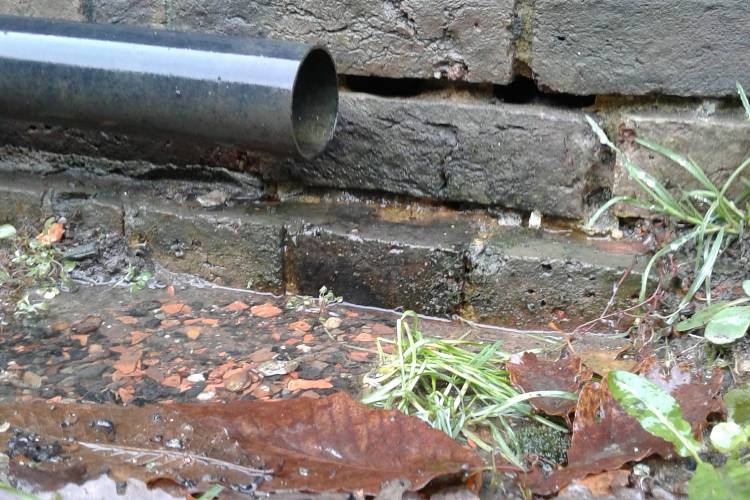
Don’t ignore the symptoms.
The symptoms and indicators of dampness are what you should pay attention to. These are the clues that tell you something more pressing is going on. Simply eradicating the symptoms with a spray treatment is not addressing the root cause. It also delays the real problem and makes it worse.
The root source should be relentlessly sort out and stopped. Sometimes it is more obvious than you think! Like this downpipe on the left.
The downpipe above was ignored for so many years and left to discharge the stormwater at the base of this property. By the time the owner called us in to help, they had been quoted for rising damp treatments, woodworm treatments, concrete floors, etc.
Nobody noticed or even cared about the downpipe, which was so obvious. The misinformation, hard selling and passage of time stalled the owner and in doing so, the whole floor succumbed to the fungal outbreak, and it collapsed as a result. Thousands of pounds could have been saved.
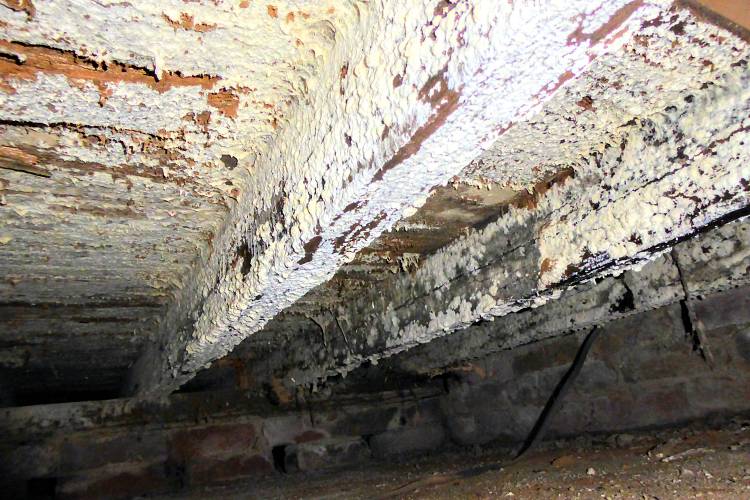
To Quickly Round Things Up:
- Both wet rot and dry rot are types of fungal decay and the symptoms of an escape of water or high humidity in that area. For us, the first important task is to identify which type of rot your building has sprouted and where the water’s coming from.
- The visible fruiting body of the fungus is acting like a flare for you to see and act. Don’t simply remove the fungus and ignore it. Not every fruiting body is Dry Rot, contrary to belief.
- Different funguses survive on different levels of moisture content. Wet rot needs a high level to grow (50% and above), whereas dry rot germinates at a lower level (around 20%-30%).
- Both types of fungus feed on the timber they infest, weakening the structure and, ultimately, if left too long, causing it to collapse
- Wet rot decay is often a result of defective plumbing, gutters, downpipes, or damp abutting masonry. Fortunately, it doesn’t spread through masonry and its growth stops when the source of moisture is shut off and decayed timbers removed.
- The dry rot fungus, Serpula lacrymans, is regarded as the ‘cancer’ of buildings. It is a bit dramatic, but left unchecked it can do some serious damage.
- Like all fungi, Dry Rot needs water as an essential growth requirement, and it is this requirement that limits, or excels the extent of its spread and that damage that dry rot fungus can cause.
- Dry rot can travel through and along the wall surface behind plaster or render. Water is its life blood – without it, it’ll simply die, and if the source is fixed and the area stays dry, it’ll never appear again.

